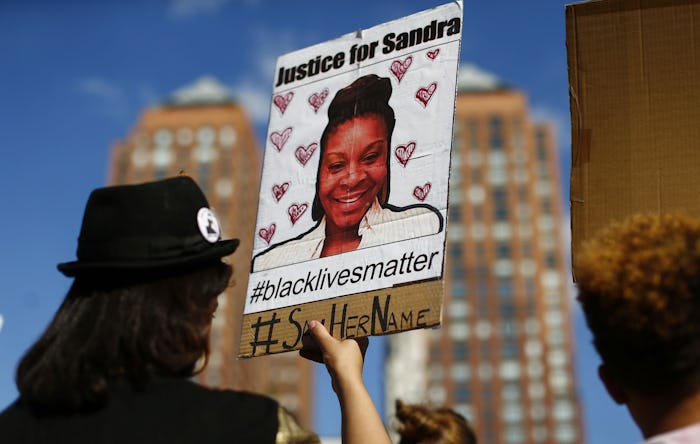News

What Sandra Bland's Arrest & Suicide Say About The U.S. Prison System
On Tuesday, a Texas grand jury decided they would not indict anyone for the death of Sandra Bland in the Waller County jail where she was held. While this news does not include repercussions against Brian Encina, who pulled Bland over and arrested her, Bland's family — and much of the world — remains very much upset. Bland's arrest was blatantly wrong, and much has been said, written, and discussed about her imprisonment and her death. But Bland's subsequent suicide then showed the uglier side of a justice system that simply does not work.
The prison and jail population of the United States, if lumped together as a city, would be the fourth largest in the nation. According to Mic, it would come in just behind New York, Los Angeles, and Chicago. 25 percent of the world's prisoners live in the U.S., although the country only accounts for 5 percent of the global population. Over 3,000 people are serving life sentences for nonviolent crimes, including stealing gas from a truck, shoplifting a jacket, and selling $10 of marijuana. On top of that, states often spend double or triple the amount of money on incarceration than they do on education, and recidivism rates are through the roof — two of every three inmates released ends up back in jail.
This is because, all too often, those who have been jailed end up in far worse conditions than when they first entered. Those who have been through the system experience discrimination in employment and housing, and having a criminal record can be a daunting life stain for someone who previously had an unblemished future.
Bland was on her way to a new job when she was arrested for nothing more than failing to signal a lane change, and it makes me wonder: can anyone say they've never had a similar driving mishap? To go from the promise of a new career to the bleak inside of a jail is shocking. In an interview with NPR, corrections expert Steve J. Martin called it the "shock of confinement."
Said Martin:
It overtakes your being in the sense that normalcy is gone.
The reaction, instead, is: "'Oh my heavens. My life is going to end right now with this experience. Everything I've worked for, the way people view me, the way my parents view me' — all that stuff is suddenly and dramatically in jeopardy." That stunned, helpless feeling may account for the fact that 31 percent of deaths in jails are due to suicide, according to NPR, which is over four times the rate of suicide in prison.
Our current justice system allows racism and prejudice to sneak into what should be a process ruled by logic alone. It makes some states spend fivefold what they do on education on inmates. It brings two-thirds of its population back to its doors. Even for those whose crimes are barely deserving of the name, it leads to lifelong struggles.
It's time we looked at the alternative system of restorative justice, where offenders, victims, and the larger community work together to decide how harms can be repaired and further offenses can be prevented. It's a young system — it only began to emerge in the '70s — but has already proven to have an effect on recidivism and community. Canadian government research found that restorative justice cut recidivism rates in half, and American research showed 60-80 percent of victims were happy with the outcomes of restorative justice. It also keeps offenders out of jail and prison sentences, which reduces costs and the psychological effects that, unfortunately, can lead to many of the horrifying justice cases we've seen in the past couple of years.
Image: KENA BETANCUR/AFP/Getty Images